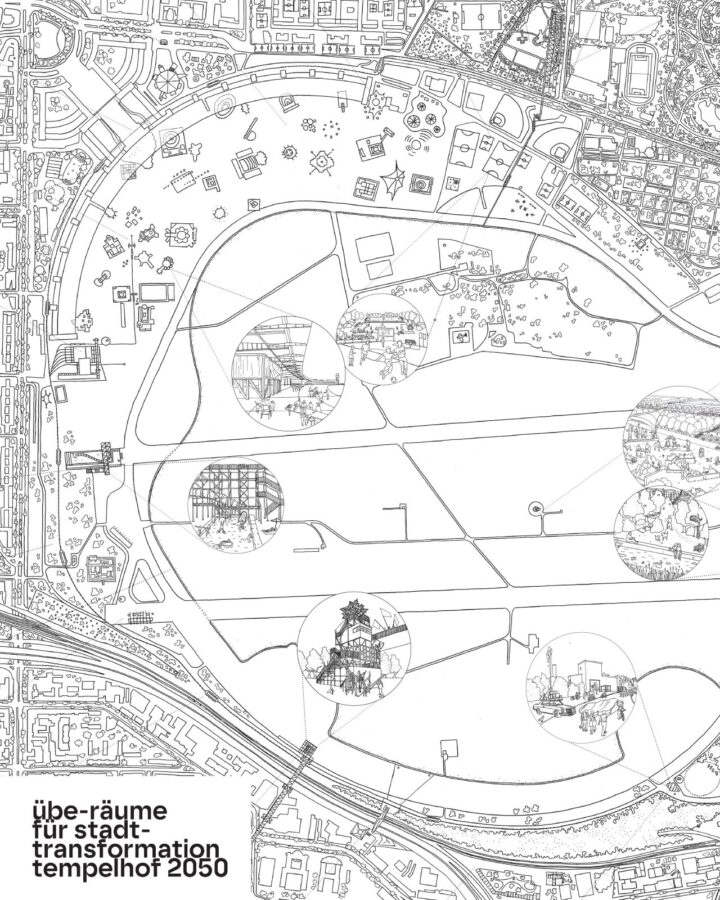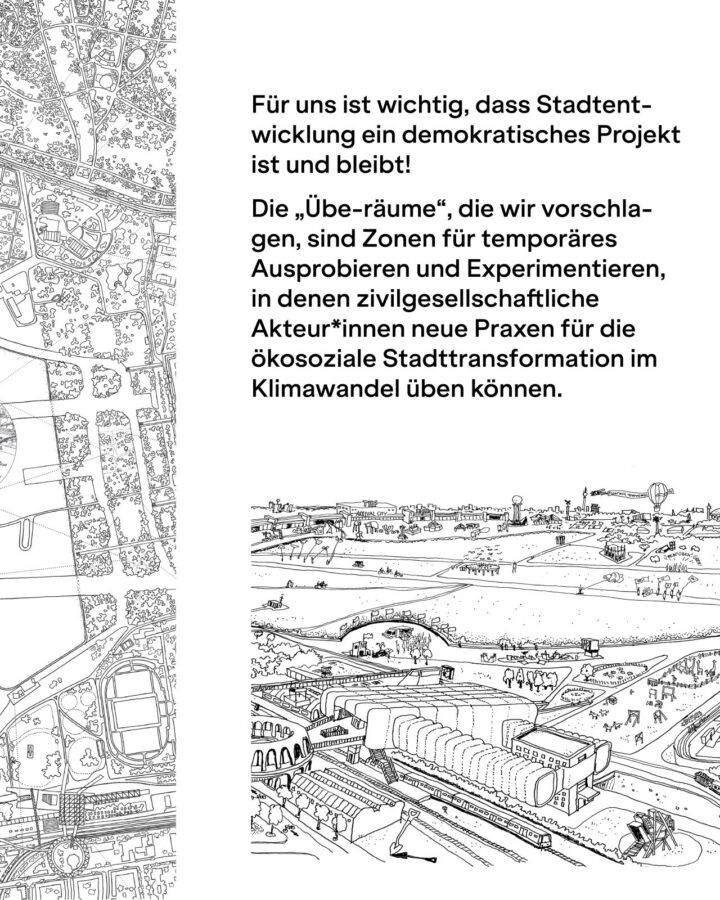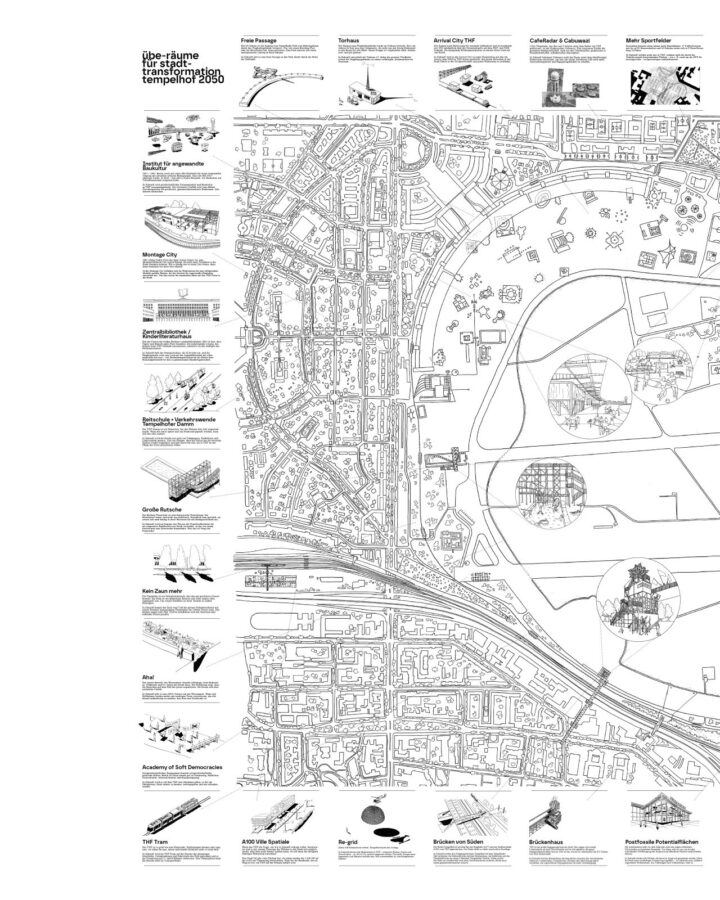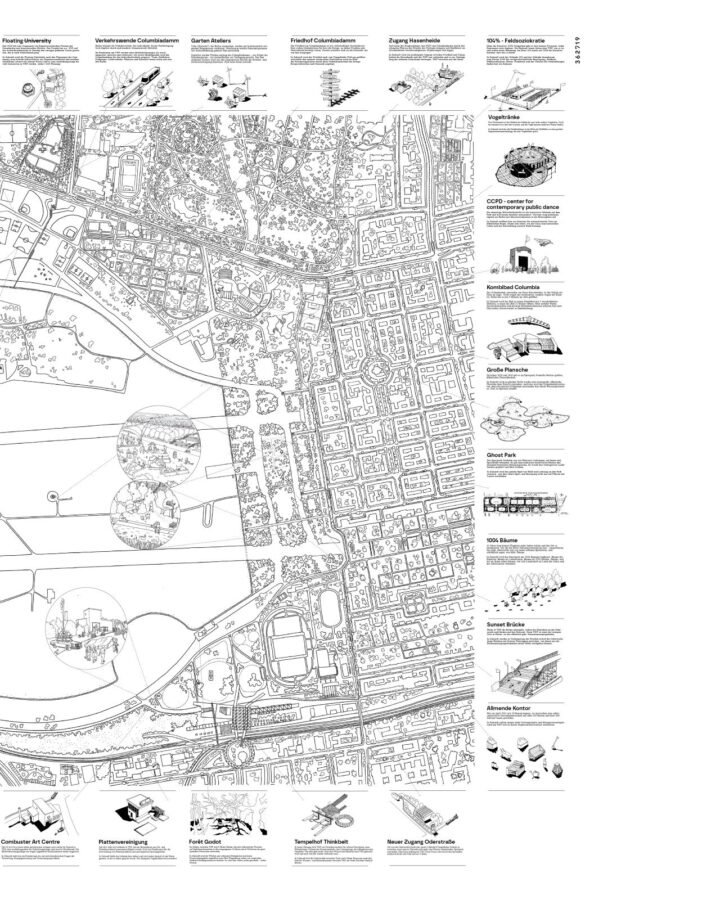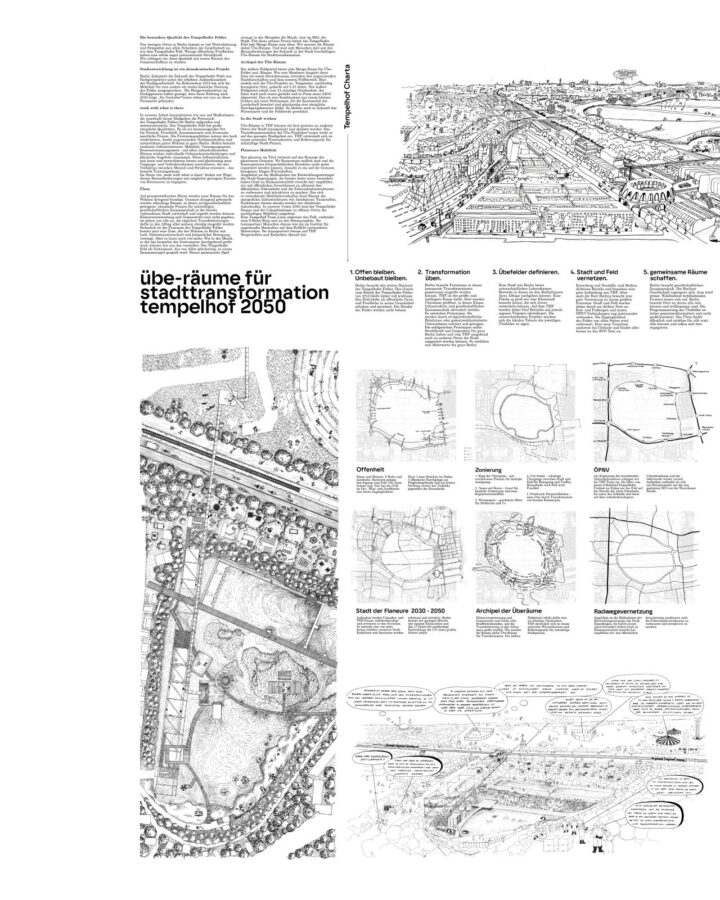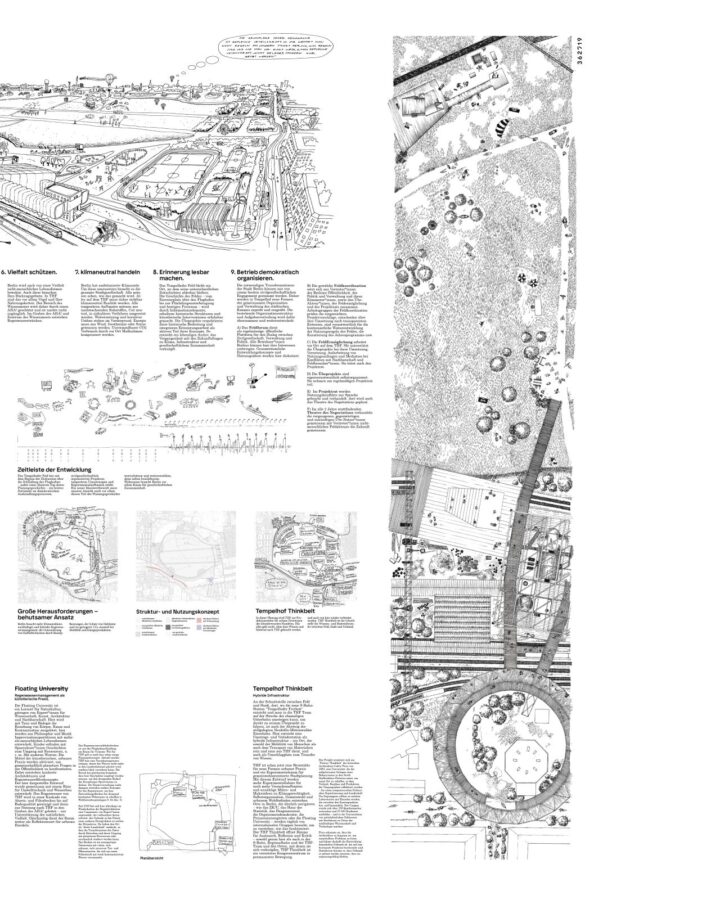1
An award for raumlabor together with urban catalyst and Christopher Dell
Whether Berlin needed an ideas competition for Tempelhofer Feld is debatable. To be on the safe side, we took part together with urban catalyst and Christopher Dell. Over the weekend, the jury awarded our work “übe-räume für stadttransformation – berlin 2050” (spaces for urban transformation – Berlin 2050) one of six prizes as one of four non-construction designs. So far, so yippee! For us, it is important that urban development is and remains a democratic project! The Tempelhof Act of 2014, which was supported by the majority of Berliners, and the results of the 2024 citizens’ workshops make it clear: the ideas that are now being sought, in addition to “how not to build,” are above all “which civil society and public welfare-friendly dynamics can and should benefit from the fantastic spatial potential of Tempelhof Field?” The “practice spaces” we propose are zones for temporary experimentation, where civil society actors can try out new practices for eco-social urban transformation in the face of climate change. Our many years of experience with Tempelhofer Feld and its neighboring neighborhoods, the development of the pioneer strategy after the airport’s closure, but also the establishment of Urbane Praxis e.V., our involvement in Floating e.V., and in the Zusammenkunft Berlin e.G. became the blueprint for our award-winning design. From this perspective, it became clear that there is already a great deal to preserve, strengthen, and develop for the future of Tempelhofer Feld: the 100% Tempelhof activists, the Allemende Kontor community garden, the Torhaus, the Plattenvereinigung, Cabuwazi, Atelier Gardens, and the Floating University. In our design, we propose many other desirable innovations: more training facilities for social interaction, more connections for cyclists, pedestrians, and the exchange of ideas all the way to Brandenburg and back, a tram line around the field, and other ideas, such as the ZLB in the THF Kleiderbügel and experimental areas for building culture on its forecourt, the A100 as a 25 km inner-city residential development area, more water, more trees, more commemoration, more coexistence. Supported by such initiatives and processes, embedded in a well-considered preservation and maintenance plan, we are in favor of change. So that Tempelhofer Feld can continue to contribute to the development of the future for all Berliners as common ground.
raumlaborberlin
Benjamin Foerster-Baldenius
Markus Bader
Mariana Malhó
Corinna Studier
Jana Köhle
Jule Jungblut
urban catalyst
Klaus Overmeyer
Julian Hees
Christopher Dell
2
raumlabor, together with Urban Catalyst and Christopher Dell, won one of the six first prizes in the THF ideas competition. Now all the winning designs are being exhibited publicly on the site of the former airport.
Hopefully, our state government will finally realise that most Berliners want to keep the 2014 law preserving Tempelhofer Feld.
Location: THF Tower, Tempelhofer Damm 45, 12101 Berlin
Exhibition: 20 September to 5 October 2025
